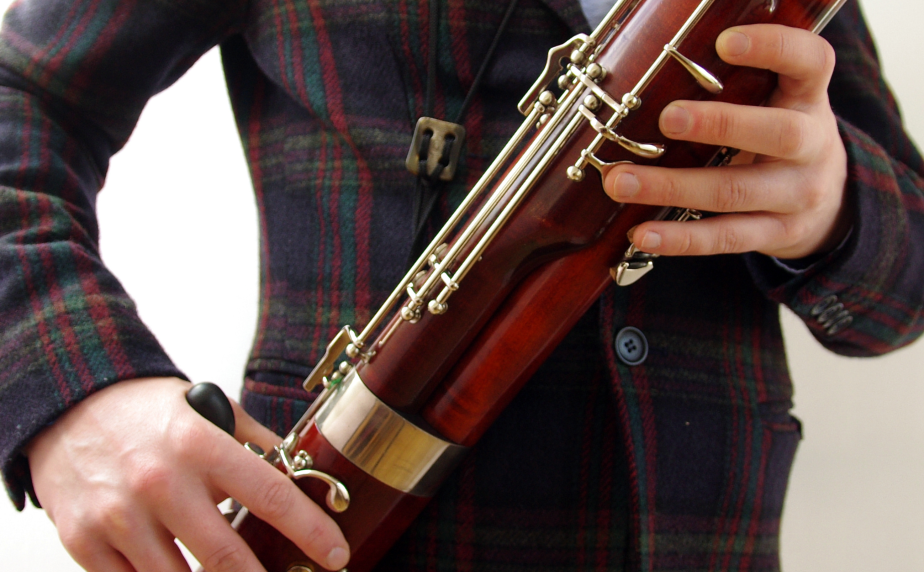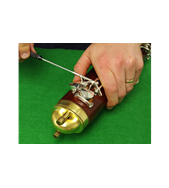How to assess a bassoon – top ten tips
July 26th, 2018

How to assess a bassoon – top ten tips
Article Author: Martin Ludlow, In-House-Bassoon Specialist and Director at Double Reed Ltd.
Every bassoonist needs a bassoon. Once the options on the beg, borrow or steal front have run out, the bassoonist is confronted with the need to buy one.
This can result in rising panic in the bassoonist – how to decide what to buy, where to buy from, how much to spend and how to avoid buying a dud?
Buying new is an option, but your money will go much less far (and consequently you will end up with a lesser bassoon than you otherwise would) than if you bought a used bassoon.
Given the longevity of bassoons and the non-existent-to-snail’s-pace rate of advancement in bassoon development over the last 70 or 80 years, most bassoonists decide that a second hand bassoon is by far the best option.
Buying from a reputable supplier who has done the work for you in sifting out the duds and in preparing each bassoon to be the best it can possibly be is clearly the right approach to take. It is worth taking the time to discuss your needs, budget and preferences with a supplier as they may have just the thing for you, or be able to source it for you, even if you can’t see it on their website.
And if you don’t know which bassoon would suit you, an experienced supplier will have more knowledge of brands, models and how to pick a good bassoon than almost anyone else.
Asking a teacher or professional is clearly an option – but not all of them have the experience of a broad range of instruments needed to provide insightful help and, in our experience, often tend to fall back on suggesting certain brands (often the one they play on themselves or ones they have played in the past).
With the price of bassoons varying easily by a factor of ten, you will clearly need to take a more exacting approach to assessing a bassoon with the more expensive instruments, but you should not need to skimp overly much, if at all, on general condition. Cared-for, well-maintained instruments are available at all price points.
Having asked around, looked at websites, talked to supplier(s) and decided on a likely candidate and you have it in your hands, what do you do next? Here are our top ten tips for assessing a used bassoon. But bear in mind there is no definitive “do not buy” or “definitely buy” conclusion – it all depends on price, what you are prepared to sort out after purchase and how much you love the particular bassoon.
1. The crook
The crook: Is it shiny, does it have any dents in it? Is it the same or a comparable brand as the bassoon? You won’t get the best out of a battered, tired crook, or one that is inferior to the bassoon it comes with.
And, when you come to play the bassoon, if it is playing sharp or flat, or the sound is stuffy, or the high notes are difficult to play, look again at the crook – it could be a mis-match for the bassoon (a reputable supplier will, of course, extensively test each bassoon prior to putting it on sale and make sure that the crook is a good match for it). Again, crooks are expensive to replace, so make sure it is right for you.
2. The woodwork
Visual inspection of the wooden joints: Look at each joint carefully in a bright light, assessing the state of the varnish, looking for any cracks and, if present, whether they have been repaired. Tenons are places where bassoons often have cracks, so look at them with particular care.
Take off the end cap on the butt joint and remove the U bend and look for signs of rot (rough or soft wood in particular).
Examine the open tone holes – are they smooth or do they have rough or worn edges or show signs of water damage?
None of the above are necessarily a problem for a bassoon, as long as the bassoon plays well and any unrepaired cracks or water damage are attended to in good time. But take into account the hassle and cost of making these repairs and bear in mind that a reputable seller should sort these things out prior to sale.
3. The keywork
Visual inspection of the keywork and mechanism: Again, look at each joint carefully in a bright light. What is the state of the silver plating (assuming it is silver plated) – are there any worn patches, or patches which have flaked off, paying particular attention to the touch pieces?
Are all the keywork, mechanism and key guards in place and correct in terms of position, straightness, etc. Are there any oddities in the keywork – components which do not match or are unusual in positioning or action?
Hopefully you have determined whether the bassoon has the keywork, rollers, and so on that you require before reaching this stage but, if not, now is the time to assess it.
Extra keywork and rollers can always be added at a later date, and the odd touch piece can be silver plated at a later date as well, but all at a cost of course.
4. The pads
The pads: visually inspect the pads - are they bright white, smooth and soft to the touch, or are they yellow, dried out and hard? If the latter, they are unlikely to seal well, and even the smallest leakage will affect your ability to play the bassoon well.
A reputable supplier will change all the pads prior to sale if they are showing signs of deterioration; this is an expensive but worthwhile job which will ensure the bassoon plays at its best for years to come.
5. The pressure test
Next carry out an ad hoc pressure test to check the quality of the pads’ seal – take each joint separately, close all the keys and open tone holes, put your hand over one end and blow. If you can hear any air leaking then it is likely to be one or more pads are either too old or are not seated properly (or an unsealed crack is present or, in the case of the butt joint, the U bend is not seated properly). Any detectable air leaks will affect the playability of the bassoon quite profoundly. An alternative test is to suck rather than blow air through each joint. Each joint should hold a vacuum for a little while. If it fills up with air immediately then there is a leak.
6. Is it comfortable to play?
Now put the bassoon together and play it, making sure that you have a good reliable reed to hand (ideally have several dependable reeds of different types, as each bassoon will perform differently with different reeds). Take time to get to know the layout of the keywork and the particular characteristics of the bassoon, as all bassoons are different. This may take several hours of playing depending on your experience. Listen while you play to its character, and ask others to listen with you to provide feedback.
After you have got used to the bassoon and any differences in key spacing, etc. check that you can play it comfortably. If the keys are too much of a stretch, try adjusting the hand-rest. If it is heavier than you are used to, then try a seat strap or harness. But ultimately, if you cannot get comfortable with the bassoon you may need to think again.
7. Check pitch and intonation
Check the pitch and intonation against a tuner – the crook and the reed will make a difference, so changing either will affect the pitch as will adjusting the amount the crook is inserted into the wing joint.
Then play the bassoon from top to bottom. Bear in mind that no bassoon, not even a brand new Heckel, has perfect intonation; certain notes will be slightly too sharp or flat. Obviously, the more you pay the better the intonation should be, but some compromise will inevitably be needed. However, a properly set up bassoon of any age and above the very cheapest should have decent intonation at least, and should not compromise your ability to play in an orchestra.
8. Try the bassoon in various environments
Take the bassoon to your orchestra or other ensemble, and try it in as many environments as you can – small rooms, large rooms, alone and with other instruments. Check its projection and tone in each situation. Some bassoons will perform well in certain situations and others in different situations (in a small ensemble or a large orchestra for example). Ask other bassoonists to give you feedback, and also ask other bassoonists to play it while you listen.
9. The case
The case: do all aspects work, is it clean, does it suit your needs? Cases are expensive, so make sure the case supplied works for you.
10. Do you like the bassoon?
Finally, when you have run through everything else comes the most important tip of all: do you like the bassoon? Does it look, sound and feel right in your hands? For some people the look is paramount (new-looking or with patina), for others the tone is paramount (that beautifully resonant old-Heckel-type sound, for example). For others, it just has to feel right in their hands.
A bassoon is a big investment and you will ideally be spending a lot of time with it, so when all is said and done, make sure you love it.
Article Author: Martin Ludlow, In-House-Bassoon Specialist and Director at Double Reed Ltd.

News and guides


